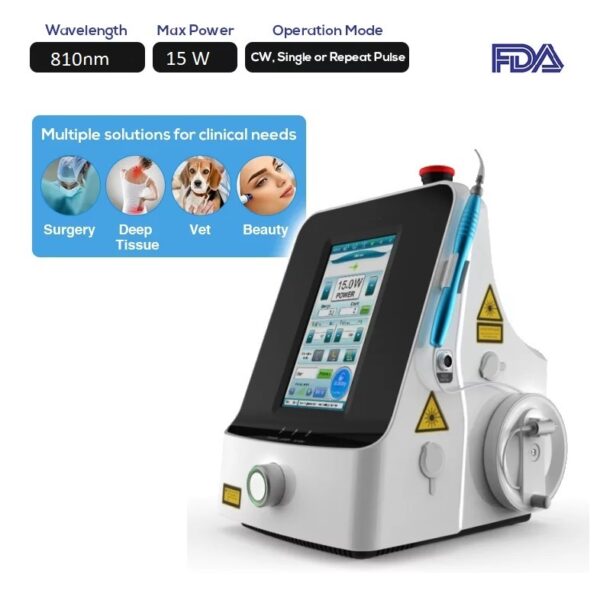Trachea cancer, often known as bronchial cancer, is an uncommon kind of lung cancer. This is due to the fact that the trachea (or windpipe) includes two branches known as bronchi, which is where the sickness usually begins. The vast majority of tumors that develop in the trachea or bronchi are malignant.
However, other tumors can spread to the trachea (metastasised) from other parts of the body. It’s not known what causes every type of trachea cancer. However, in some cases, age and smoking are risk factors.
Surgery or bronchoscopic procedures, alone or in combination with chemotherapy, may be used as treatment. Radiation therapy has just been included to the list of therapies (laser therapy).
This particular type of therapy is expected to restore breathing and slow tumor progression in patients who are not candidates for surgical removal of the tumor.
There are several laser radiation devices available, but the Portable Surgery 810nm Diode Laser System FDA LASER-1.2A has shown to be one of the most effective.
The FDA LASER-1.2A Portable Surgery 810nm Diode Laser System is specifically designed to provide better and faster cancer removals, even at lower power.
As such, the Improved cutting performance makes it ideally suited to all surgical applications namely Trachea cancer.
LASER-1.2A is also highly recommended by otolaryngologists due to its excellent alignment and precise sighting during treatment.
For more perfect results, the device is supported with a fibre guide laser. First, it is compatible with various endoscopic uses.
Second, these special fibres are sterilisable which, in turn, prevents any possible cross-infection while guaranteeing a clean and bloodless operative area.
The above feature is expected to reduce the thermal damage and to its peculiar interaction with haemoglobin.
Furthermore, the complete lack of water absorption significantly reduces the overheating of the surrounding tissues. This should increase the efficacy of the laser treatment.
Due to all these advanced options, the LASER-1.2A guarantees increased cutting effectiveness, much higher than the one obtained with infrared lasers.
Lasers are a relatively new component to cancer treatment. However, as a result of their effectiveness, laser use and applications have grown fast.
The benefits of laser therapy are discussed in this article, as well as the effectiveness of the LASER-1.2A as a surgical laser device in the eradication of Trachea Cancer.
References: bronchial cancer
Disclaimer: Although the information we provide is used by different doctors and medical staff to perform their procedures and clinical applications, the information contained in this article is for consideration only. SIFLASER is not responsible neither for the misuse of the device nor for the wrong or random generalizability of the device in all clinical applications or procedures mentioned in our articles. Users must have the proper training and skills to perform the procedure with each Laser System.
The products mentioned in this article are only for sale to medical staff (doctors, nurses, certified practitioners, etc.) or to private users assisted by or under the supervision of a medical professional.

